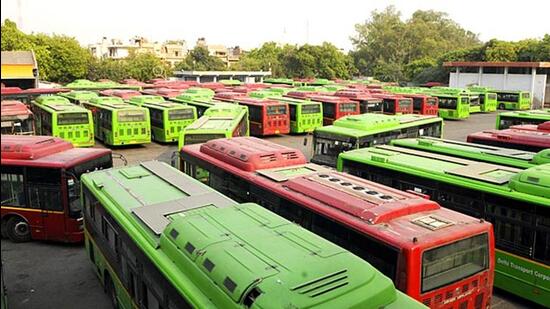Premium bus service likely to launch this month
The capacity will be limited to the number of seats and no standing passengers will be allowed. The date, number of buses and routes will be announced soon
New Delhi

The Delhi government’s premium bus service scheme is likely to take off in the next two weeks, after two private companies were granted licences to commence operations, officials aware of the development said on Tuesday. Officials said that the date, number of buses and routes will be announced soon.
Officials said the buses under the scheme will be equipped with CCTV cameras, GPS, panic buttons and Wi-Fi, among other features. Also, the capacity will be limited to the number of seats and no standing passengers will be allowed, they said.
A transport department official, requesting anonymity, said that aggregators Uber and Aaveg were granted licences. “Uber is going to launch the service first with a fleet of 40 to 50 premium buses. The buses will be fully air-conditioned and no standing passengers will be allowed. Bookings can be done through the app and only those who have pre-booked tickets will be allowed to board the buses. The buses are contract carriages, which means they will not stop at every bus stop to pick and drop passengers. The premium buses are also going to run among Delhi, Noida, Gurugram, Ghaziabad and Faridabad,” the official said.
The launch of the bus service is a part of the Delhi government’s plan to rope in private players to run premium buses for commuters who do not wish to use public buses due to concerns over comfort and crowds. The government approved the Delhi Motor Vehicles Licensing of Aggregator (Premium Buses) Scheme, 2023, last October to pave the way for licensing and commencement of services.
Delhi transport minister Kailash Gahlot said: “Delhi CM Arvind Kejriwal envisioned premium bus service to make public transport more comfortable so that middle-class and upper-middle class residents are encouraged to shift to public transport and minimise the use of private vehicles.”
“It is good for the environment and will also play a role in reducing traffic congestion when more people leave behind their private vehicles. Two private players have been given the licence for it. Uber has made all necessary preparations for the launch of the premium bus service sometime this month,” Gahlot said.
The fare of the buses will be decided by the operator and will be market driven, officials said, adding that the government will not have a say in it. “The only condition that the government has set for the fare is that it should be higher than the fare of the DTC buses, which is up to ₹25 for a trip. The reason behind the higher fare is that the premium buses should not be competing with public buses,” the transport department official cited above said.
Dynamic pricing will be applicable to premium buses and there will be no free rides for women, officials said.
An official from Aaveg, requesting anonymity, said it is in the final phase of preparations to launch premium buses. “We are working to launch around 25-30 premium buses in July-August. All our buses will be electric and will offer premium services, which will be high on comfort for the passengers,” the official said.
Uber, in a statement in May after being granted a licence, said each shuttle would be able to accommodate between 19 and 50 passengers, and that the vehicles will be operated by local fleet partners using its technology. Uber did not reveal any further details.
Meanwhile, transport officials said that the rule mandating that these buses cannot pick up passengers who do not have a booking is to ensure that they do not affect the quality of the premium bus service.
Between 2000 and 2012, Whiteline buses provided connectivity between fixed points in the city, as well as between Delhi and Noida. They were private buses that ran under the government mandate, had a fixed route and were hugely popular among office-goers.
Initially, there were around 700 Whiteline buses and they offered more comfortable rides than public buses. However, eventually, the number of buses decreased and they went off road due to various reasons, including low profit and low demand during non-peak hours and the introduction of the Metro.
Stay updated with all top Cities including, Bengaluru, Delhi, Mumbai and more across India. Stay informed on the latest happenings in World News along with Delhi Election 2025 and Delhi Election Result 2025 Live, New Delhi Election Result Live, Kalkaji Election Result Live at Hindustan Times.
Stay updated with all top Cities including, Bengaluru, Delhi, Mumbai and more across India. Stay informed on the latest happenings in World News along with Delhi Election 2025 and Delhi Election Result 2025 Live, New Delhi Election Result Live, Kalkaji Election Result Live at Hindustan Times.






